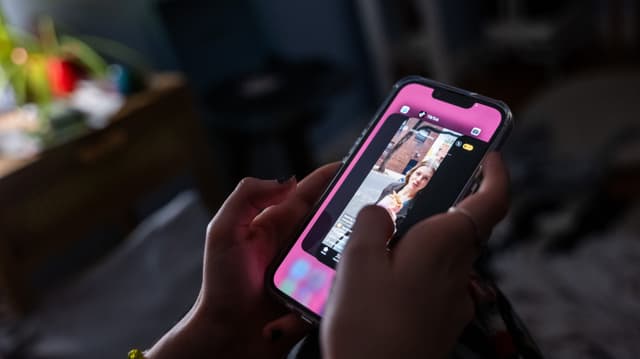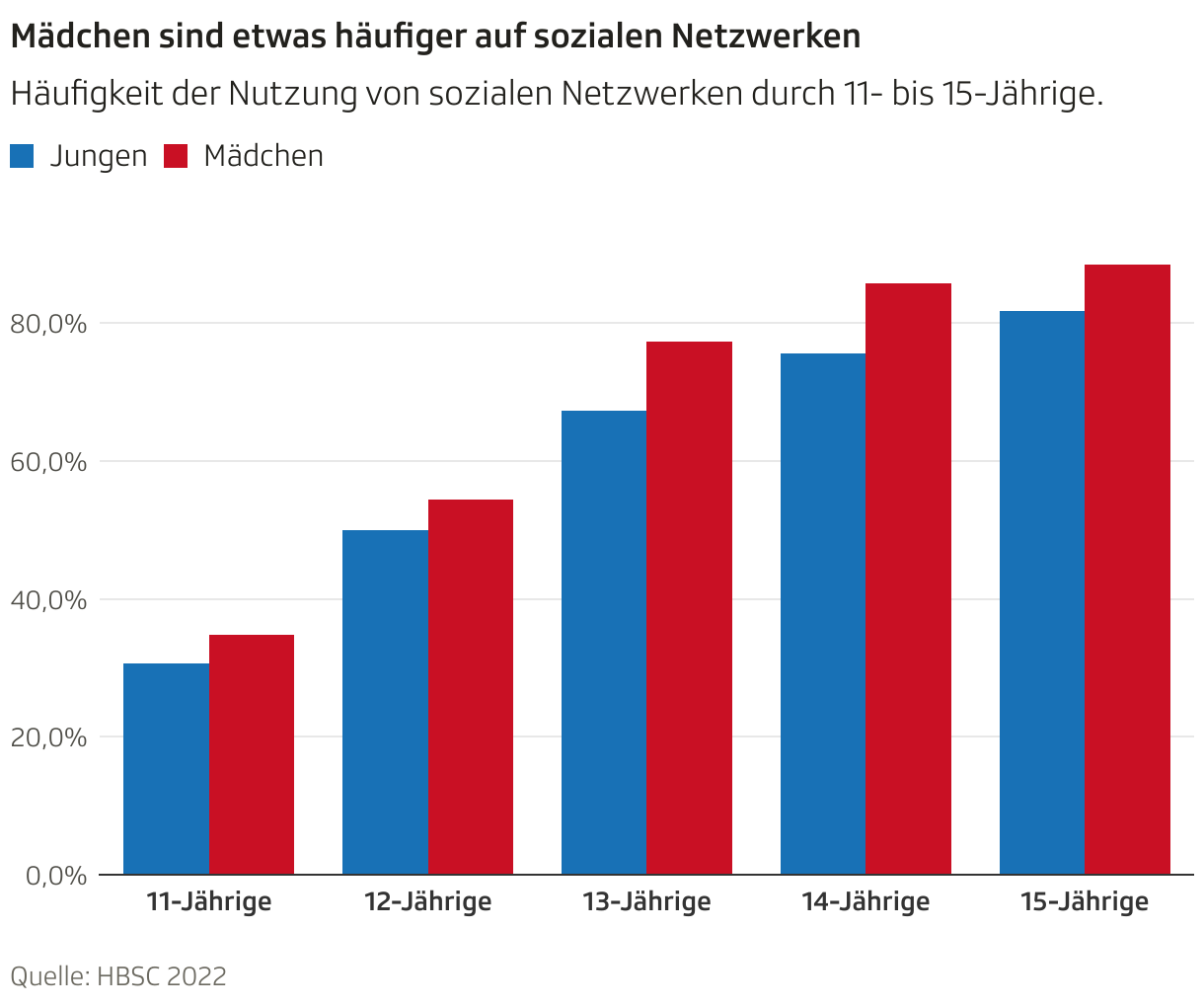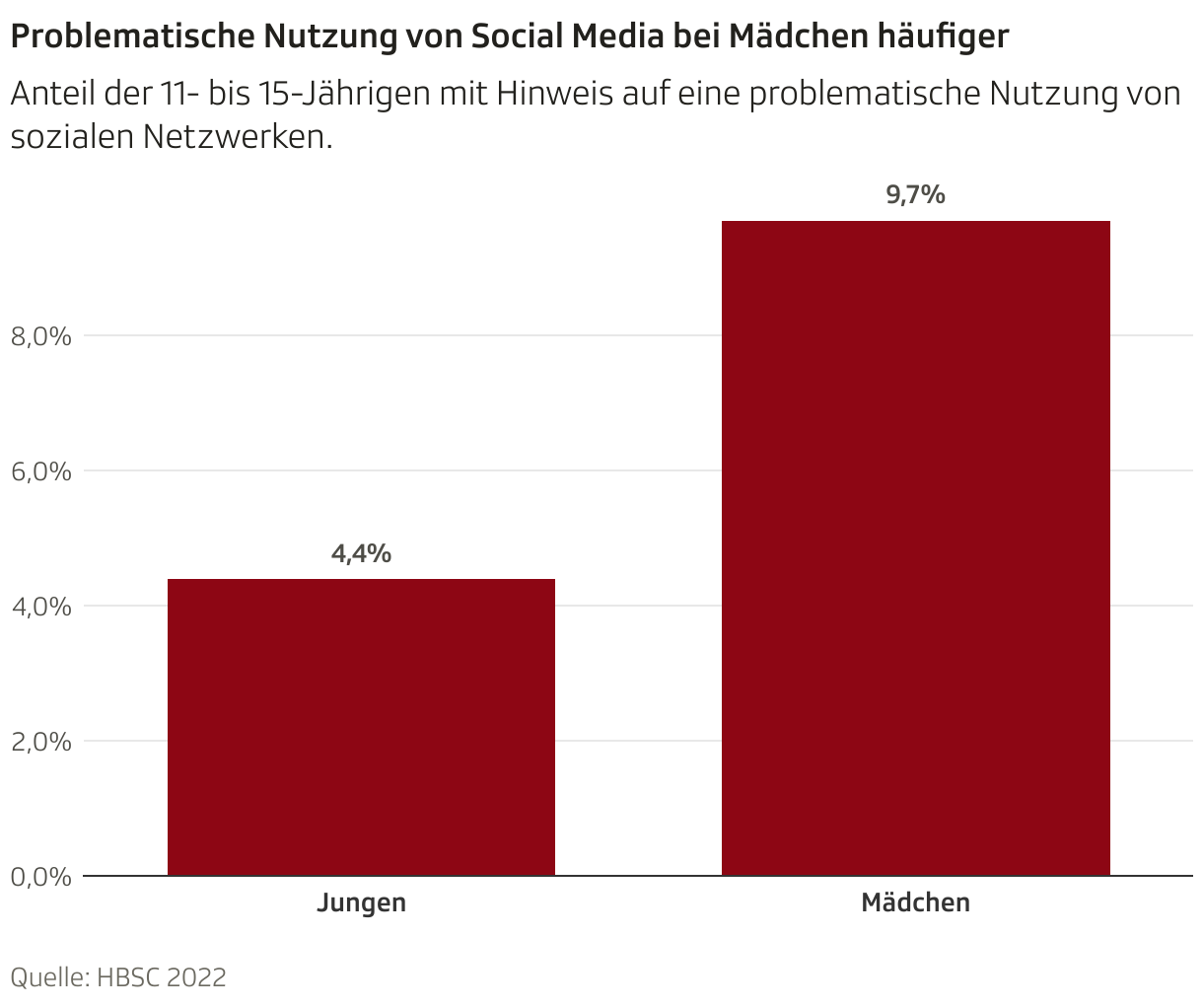Contents
Swiss young people spend a lot of time on Tiktok etc. What is a harmless pastime can become a problem. A visit to the classroom.
The students at the cantonal school in Uetikon am See, Zurich, know it well: the pull you can get into on social media platforms. “It’s always very difficult for me,” says 15-year-old Nicolas. “You go on the app once and you can hardly get away. I actually want to do other things too.”
It feels like half an hour and then I realize an hour has already passed.
On days when Nicolas doesn’t even click on the Instagram app, his social media time tends to be zero. At the moment, his classmate Cas is mostly watching videos of skiers’ spectacular tricks – and he sometimes gets lost in them: “It feels like half an hour and then I realize that an hour has already passed.”
A little more than an hour on average is still within reason, he thinks when he compares himself with others.
You could do other things in your free time, says Violet, also 15. “But then I can’t find anything better to do – and I just stay on my cell phone.” The day before, Violet admits, she spent five hours on social media. But that is an exception, she laughs. And for two hours of that time, she spoke to a friend on the Snapchat platform.
This afternoon’s German lesson in Uetikon is not about your own online activities; The class discusses – based on a play – a well-known real cyberbullying case from Germany that made waves in the media. A YouTuber called “Drachenlord” posts numerous videos online and receives tons of hate comments. Those who agitate against him have even visited him at his place of residence. Nevertheless, the Youtuber Drachenlord continues to upload videos.
Parallels to classic addictive substances
The German teacher Philipp Wampfler reads out the questions that the class wrote down: “Why doesn’t he stop provoking? What motivates a person to share everything about life without a filter? Why do you do this to yourself?” Maybe the attention makes him addicted because it releases the happiness hormone dopamine in the brain, one student speculates.
When someone isolates themselves and only uses their cell phone, it usually has to do with things that don’t just come from digital platforms.
You can tell that young people know a lot about how social media works. German teacher Philipp Wampfler is intensively involved with social networks Results from the latest addiction panorama don’t surprise him.
Wampfler certainly sees parallels to classic addictive substances. The platforms are designed to ensure that young people spend as much time as possible on them. But he also says: “If someone isolates themselves and is only on their cell phone, it usually has to do with things that don’t just come from these digital platforms.”
According to Addiction Panorama, half of 15-year-olds say they often use the platforms to escape negative feelings. This is one of several signs that indicate problematic use of social networks.


